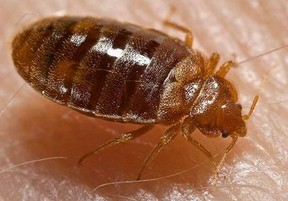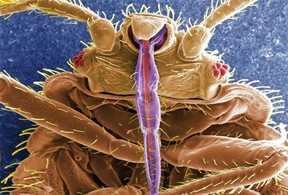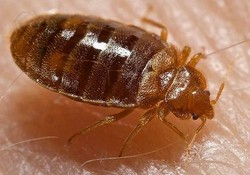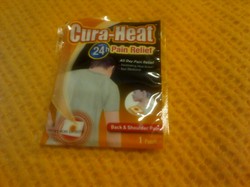
Bedbug epidemic – An imported problem
by DrDarko
Recent rise in bedbugs could almost be considered an epidemic. Latest studies and research show why something that was supposedly eradicated in 1940’s is becoming a problem again.
 You probably know the saying “Good night, sleep tight, don't let the bed bugs bite.”
You probably know the saying “Good night, sleep tight, don't let the bed bugs bite.”
Bedbugs, a bloodsucking parasites troubled mankind since the dawn of times. Known under many names like wall louse, crimson rambler, heavy dragoon, chinch bug or bedbug, this parasite with a taste for people and human blood plagues many US homes. It is difficult to get rid of bedbugs and latest research throws a little light on why common pesticides do not seem to be working against these insects.
Bedbug history
The early humans had problems with bedbugs in their caves. First mentions of bedbugs in written history are found as early as 400 BC. Most probably, bedbugs originated in Middle Eastern caves where people shared their habitat with bats and other vermin. Unfortunately, these parasites seemed intent to follow people wherever they went. They were extremely rare in England until Great Fire of London in 1666 brought a lot of imported wood and people to rebuild the city.
By the 20th century, bedbugs were everywhere and throughout the world, most houses had some degree of infestation. During World War II, bedbugs troubled soldiers on all sides, including soldiers at bases in the US.
During late 40’s increased use of DDT and other powerful pesticides, bedbug epidemic was stopped and bedbugs were almost totally exterminated in the western countries.
So, how come those bedbugs plague US again?
Bedbugs – Illegal immigrants you didn’t see coming
 Research conducted on 22 bedbug populations from nine states, sheds some light on how and why the bedbugs infested US homes again.
Research conducted on 22 bedbug populations from nine states, sheds some light on how and why the bedbugs infested US homes again.
Previous study of US bedbug populations suggested they are domestic pests. Because bedbugs are resistant to various insecticides, it was thought that they spread to homes from poultry farms where those insecticides were widely used. However, that hypothesis was wrong since same insecticides are still effective at farms against domestic bedbug population.
Entomologist Coby Schal of NC State University in Raleigh conducted a research that showed that bedbugs from different locations are genetically very different. This research also showed that there is no geographical pattern in bedbug similarity. Bedbug populations in the same location could be as different as populations from different states.
The conclusion from all this was rather clear - bedbugs were imported from many different sources overseas. Since a lot of tropical countries use insecticides for mosquito control by spraying indoors and impregnating bed nets with same insecticides, their bedbugs developed a strong resistance. Global trade and increased imports brought those resistant bedbugs to US on several occasions and from different sources.
Additional bad news gleaned from this research is that bedbugs are not affected by inbreeding. A single mated female, brought in on a piece of furniture, can set of infestation of epidemic proportions. This research confirmed that the entire Raleigh infestation came from a single source.
Bedbugs can be infected by at least 28 human pathogens. So, is there any way to fight these incestuous and dangerous parasites?
Exterminating bedbugs
Detecting bedbugs (unless you happen to own a bed bug detection dog) can be very difficult. They are found in luggage, vehicles, furniture, bedside clutter and anywhere else where people or pets reside. However, bite symptoms, fecal spots and blood smears are a clear indication that you have a bedbug problem.
Bedbug’s resistance to pesticides and the potential health risks are making conventional approach impractical.
Various dusts can be used to ward off bedbugs. Plant ash, lime and diatomaceous earth or Kieselguhr are all a form of nontoxic pesticide for bedbugs. Still, bedbugs exposed to diatomaceous earth will take several days to die.
Your best option is a mechanical one. Vacuuming up insects, dust and all areas of your home is necessary first step. Heat treating mattresses and areas around your bed will kill the remaining bugs. Although bedbugs have high resistance, exposure to temperatures over 120oF (49oC) are sure to kill them. A common steamer can help you stop entire infestation.
Bedbug’s natural enemies are spiders and ants but, no matter how effective, biological warfare is not something that you should start in your own home.
Foreign travel, increased imports and exchange of second-hand furniture are all causing this bedbug epidemic. Unfortunately, this seems to be a world wide problem that can not be solved without a concentrated and joint effort that is still lacking.
Have you ever had to fight a bedbug epidemic in your home?
Related posts
You might also like
First Aid: Would you Know What to Do?A medical emergency could happen at any moment. The question is whether you h...
Piriformis - an unusual form of sciaticaOnly 10% of the population have their sciatic nerve pass through their pirifo...







 Dying and life regretson 05/04/2012
Dying and life regretson 05/04/2012
 Good Writingon 04/12/2012
Good Writingon 04/12/2012
 Those unethical richon 04/05/2012
Those unethical richon 04/05/2012
 Dangers of using paid SEO serviceson 03/26/2012
Dangers of using paid SEO serviceson 03/26/2012



Comments
Some unwelcome guests for sure.
Yes. Everything about those bugs does seem scary enough.
This makes me want to steam clean the whole house!